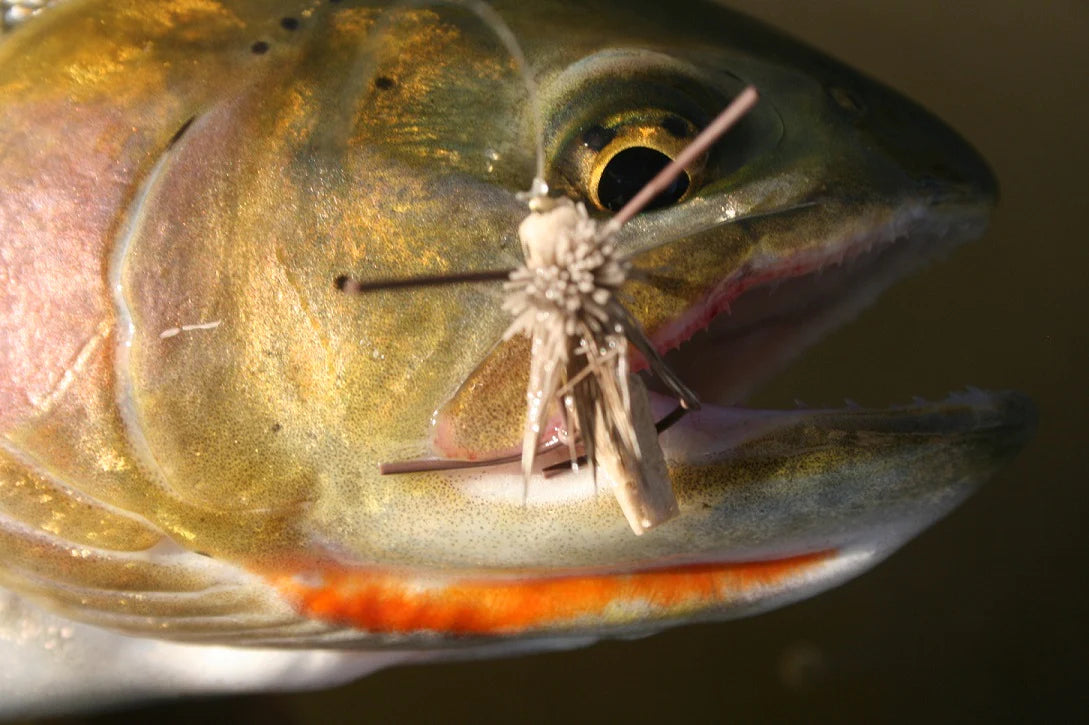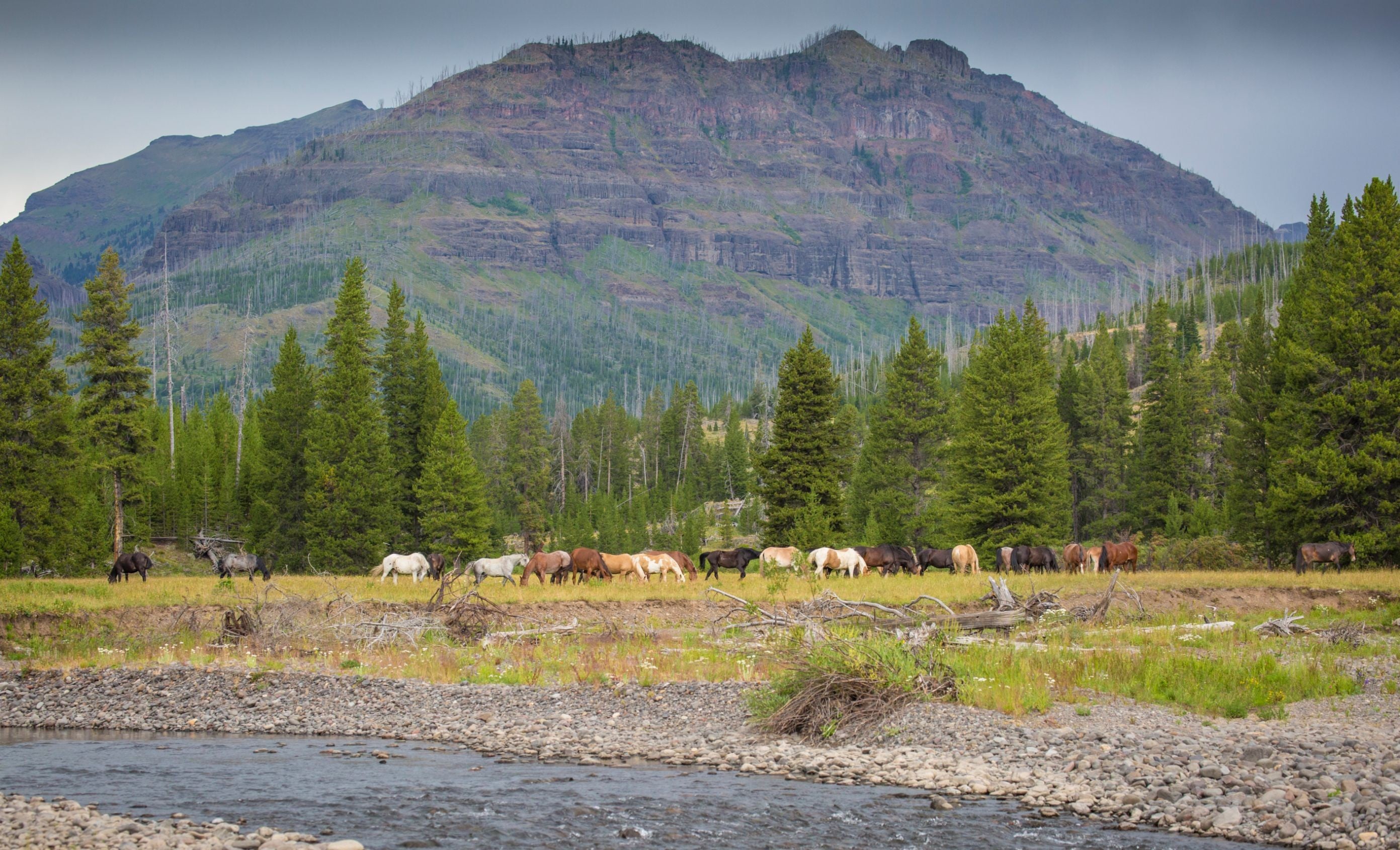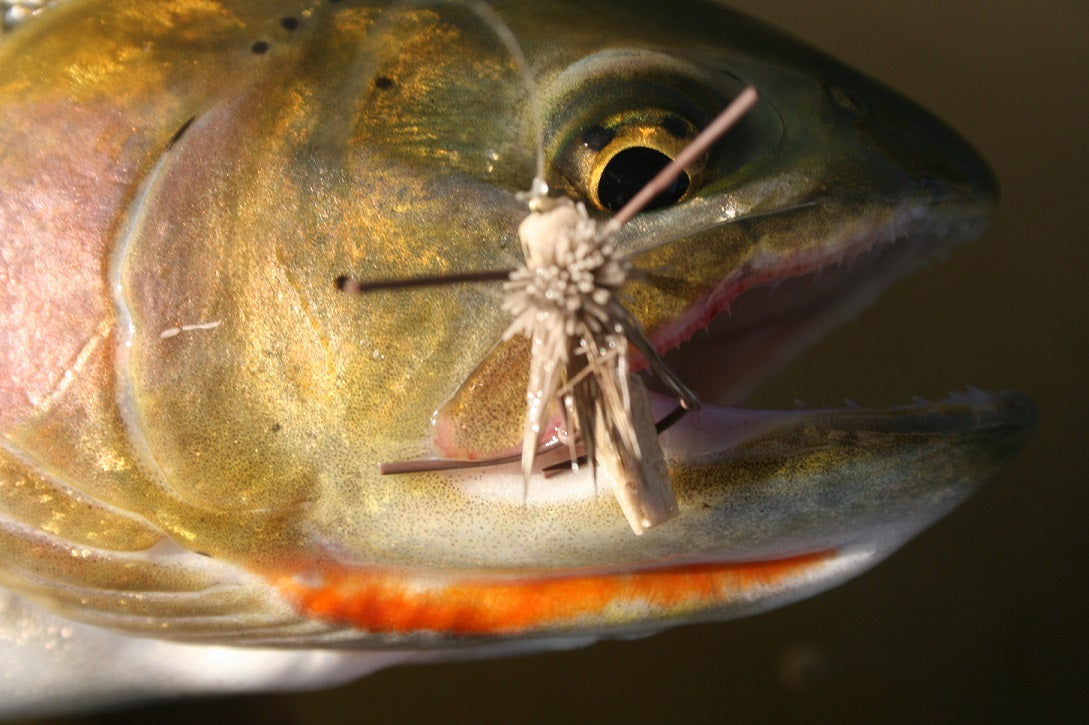Headquartered and based in Bozeman, Montana, we at Yellow Dog consider ourselves quite lucky to have a national treasure like Yellowstone National Park located directly in our “backyard.”
While over four million visitors flock to Yellowstone on an annual basis to see the geysers, canyons, and roadside wildlife, the fact is that 99% of these visitors never leave the pavement and parking areas. Despite heavy visitor traffic to some areas of the park, countless opportunities exist for exceptional fishing and hiking throughout the Yellowstone backcountry. Beyond the developed tourist areas, the park offers a diverse, mountainous backcountry landscape that invites exploration by foot and/or pack animals. This is the “hidden” Yellowstone that few visitors will ever experience, with thousands of miles of trails, hundreds of lakes, and over a thousand miles of rivers and streams.

Anglers would be hard-pressed to find a destination with as much public water within such a condensed area. Combined with this amazing access and the fishing quality, there is arguably no place in the western United States quite like Yellowstone. Anglers can also target an impressive diversity of freshwater species in the Park, including native Yellowstone cutthroat, grayling, and whitefish, as well as wild rainbow, brown, brook, and lake trout.

Here at Yellow Dog, we love to help anglers arrange truly unique domestic fly fishing experiences, and we can easily line up a number of adventure packages that provide guided access to this remote and special landscape. Below, we have created a list of useful and informative tips to make your next Yellowstone National Park fly fishing experience as enjoyable, successful, and memorable as possible.
How is fishing in the park different than fishing other rivers outside of the park?
While most people associate the park with high numbers of tourists, Yellowstone becomes a very different place if you’re willing to step 5 to 10 minutes off the well-traveled trails. You can find a true wilderness experience where you’re the only angler on the water by simply hiking and moving away from easily-accessed areas.
Whether you’re hiking in for a basic day trip, spending a night in the backcountry on your own, or joining a customized and fully-outfitted horse pack trip, finding great water and great fishing is as simple as making the effort to explore the wilderness and leave the crowds behind.
One of the biggest attractions of Yellowstone for most anglers is the Park’s rich and colorful history and the role that the area has played in the evolution of fishing in the US West.
Any angler who has researched fishing in the US West or has read any of the history books on Yellowstone National Park can confirm that the park is a top destination where you can find the perfect balance of concentrated history and natural wonder. Not every day does one get to fish in our country’s first established National Park and enjoy a protected area where more than a hundred years of regulations have helped to ensure a pristine atmosphere.
The overall variety of fishable watersheds ranging from big to small rivers is impressive. It is almost always a wade fishing experience (there’s no boating allowed) where you spot-and-stalk fish in intimate and at times, challenging conditions.
One of the big draws for anglers coming into Yellowstone National Park is the ability to target the Yellowstone Cutthroat trout, which are native and indigenous to the area. The cutthroat is a species that can thrive in a variety of different habitats and are usually eager to take a dry fly or a properly presented streamer.
They are a beautiful trout species that can be found only in the Park’s greater ecosystem region - something that always makes for a unique angling experience. In addition to these gorgeous natives, Yellowstone also boasts large populations of rainbow and brown trout along with rainbow-cutthroat hybrids.

How does fly fishing in the park change with the seasons and what flies work best?
To fish in Yellowstone National Park there is a certain window when you can access the vast majority of rivers and backcountry streams. The fishing season in Yellowstone begins each season on the Saturday of Memorial Day weekend, extends throughout the summer months, and ends the first Sunday in November. To fish in the Park, you must have a Yellowstone National Park fishing permit, which can be purchased in numerous locations throughout the Park for a small fee. State fishing licenses are neither valid nor required.
With more than a thousand miles of streams found within the Yellowstone National Park boundaries, anglers have no shortage of water options to explore within the park. In addition to fishing world-famous and “classic” streams and rivers like Slough Creek, the Lamar River, the Yellowstone, the Firehole, the Gibbon, and the headwaters of the Madison River, there are also numerous smaller rivers that are off the radar. It’s remarkable to realize how expansive the park is and how many different options are available to fish. All of them have something special to offer, depending on the type of water you seek to fish.
Throughout the summer, the park receives consistent hatches of caddis, mayflies, and stoneflies, while at the same time supporting healthy aquatic biomass that includes baitfish, sculpins, leeches, and minnows. So much food in the overall aquatic ecosystem translates to great habitat for trout fishing. The aquatic insect hatches in the park mimic similar hatches found throughout the greater Yellowstone ecosystem, offering the same types of insect action found on the Henry’s Fork and all throughout the Gallatin Range and Paradise Valley.
Later in season means the arrival of terrestrial fishing, which continues into September when things begin to cool down. Strong numbers of hoppers, ants, beetles, and more create incredible dry fly opportunities utilizing large, floating patterns that are fun to fish and easy to see.

What do you need to be aware of when backcountry camping in the park?
One of the biggest draws to the area is an abundant and diverse wildlife population, which means that it is important to be aware of the proper wilderness etiquette when sharing this environment with the Park’s wildlife. There is a chance that you will have close encounters with the local wildlife, which honestly is one of the great things about exploring the backcountry.
Taking the necessary precautions such as being savvy on your bear etiquette techniques (hanging your food, carrying bear spray, and making yourself known as you explore the backcountry setting) are all important practices that can help prevent unwanted conflict with animals. As visitors, we have the privilege of sharing this landscape with the local wildlife, (it’s their environment after all!) so being smart and keeping up-to-speed on wildlife etiquette is always important.

Of course, dealing with the wildlife in Yellowstone - especially for those who are not necessarily comfortable around bears, moose, elk, and other large mammals - is one of the reasons why so many visitors rely on the experience of seasoned backcountry guides and outfitters.
They will be able to provide all the necessary gear along with the knowledge and hands-on experience to create a fun, enjoyable and safe adventure. An outfitters’ extensive knowledge of the area can also provide you with both natural and historical information of the area, adding an educational and informative aspect to your backcountry experience.
Regulations for fishing in the park
Worry not. Your guides will be on top of the rules and regulations as well! Just remember that you will have to have a YNP fishing license. If you are going to go backcountry camping, you will also need to stop by a ranger station, register for a campsite and also watch a backcountry camping video that brings you up to speed on wildlife etiquette and other regulations. Lastly, no barbs on your hooks, and using lead split shot or other materials is prohibited.
Parting advice
Booking a guided trip through Yellow Dog Flyfishing Adventures is highly recommended if you’re interested in exploring the best of Yellowstone with a next-level backcountry experience. Whether it’s a single day of fishing or a multi-day, backcountry pack experience, guided trips with an outfitter will expose you to incredible areas and experiences that most visitors will never see.
The Yellowstone backcountry offers a true wilderness experience far from the main roads and the hordes of tourists that jam the Park’s visitor centers, boardwalks, and parking areas each summer. It’s a chance to experience what Yellowstone actually is: one of the last great wilderness areas in the lower continental United States.
Want to learn more? Click here to listen to our WAYPOINTS Podcast with Shane McClafflin: Fishing and Horsepacking the Wilds of Yellowstone. Shane McClafflin is the owner and lead guide for Sunrise Pack Station – a wilderness outfitting business that specializes in backcountry horseback and fishing trips in the wilds of Yellowstone National Park.
Get Prepared For Your Next Yellowstone Backcountry Trip
+ Shop Our U.S. Rockies Backcountry Equipment List
+ View our Montana Backcountry Fly Fishing Trips
Related Articles:
- Useful Tactics for Fly Fishing in Fast Water
- 4 Great International Family Freshwater Fly Fishing Trips
- Top Family Freshwater Fly Fishing Lodges in the US
- 7 of the Most Pristine Trout Fisheries on Earth
- Backcountry Fly Fishing Trips: What They Are And Why You Should Take One
- The Best Fall Fly Fishing Destinations In The West
- Dry Fly Fishing: What, When, and Where
- 8 Mult-Day Float and Pack Fly Fishing Trips in the U.S. West
- Streamer Fishing: What, When, and Where































